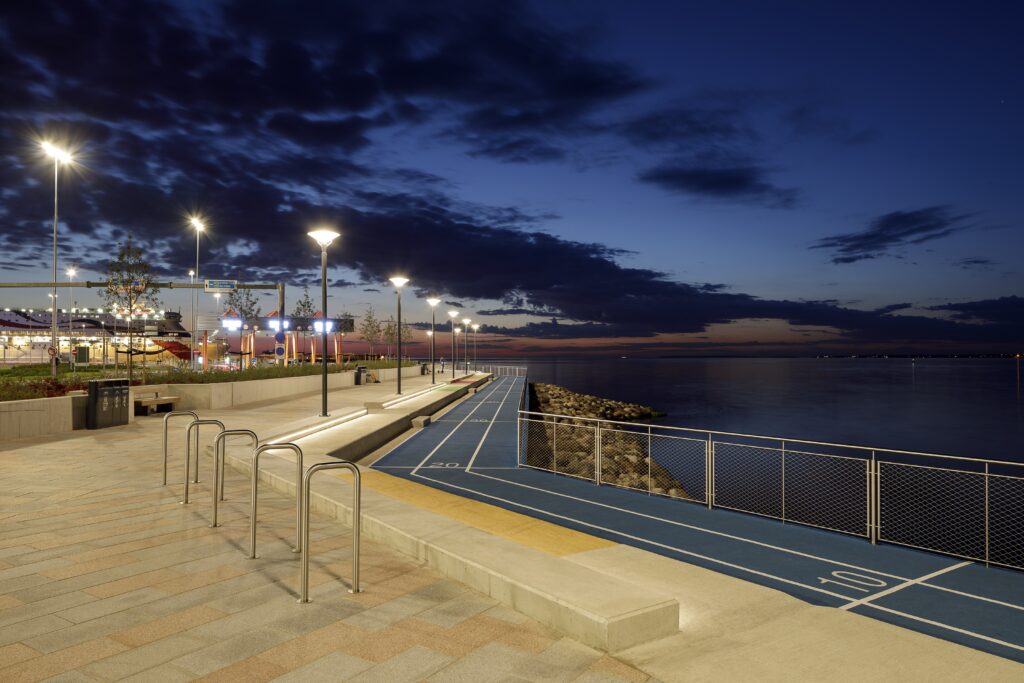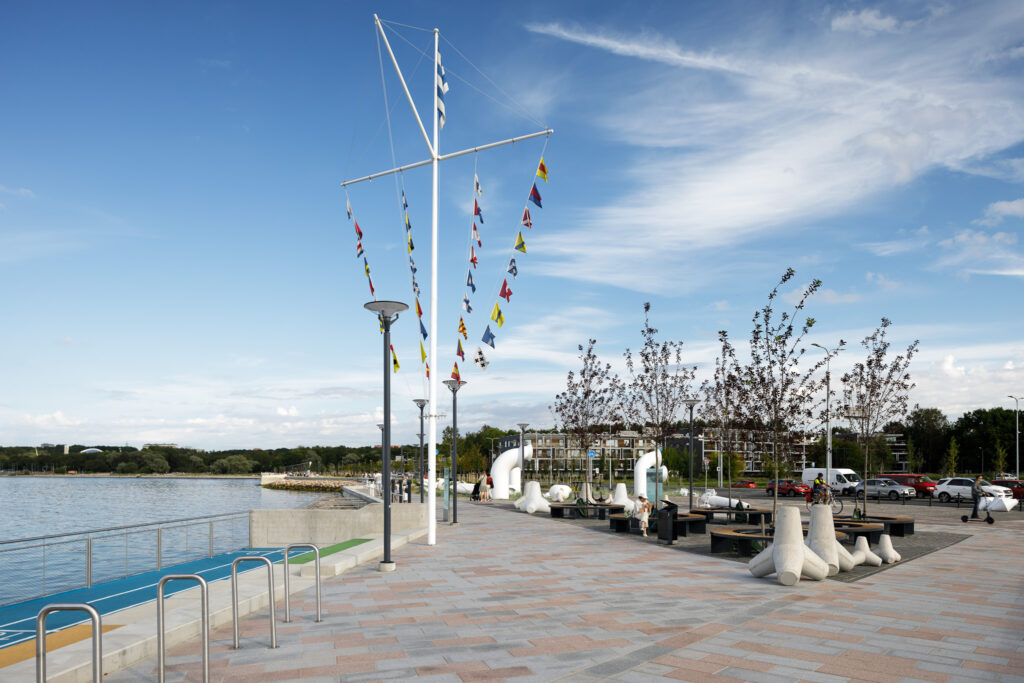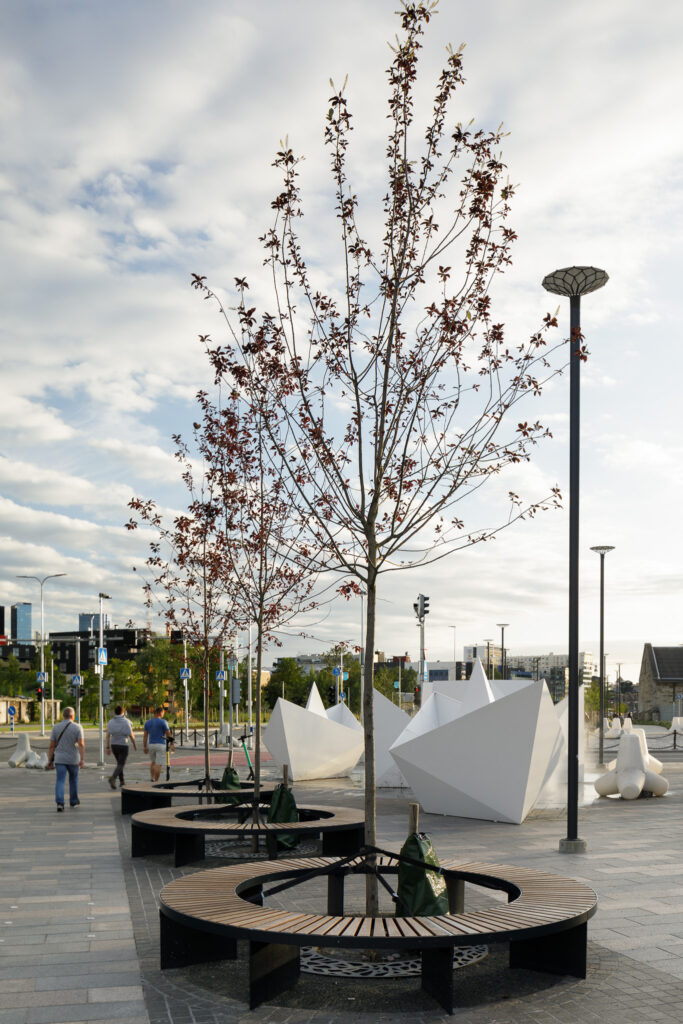The promenade on Reidi Road is probably the largest chunk of public space completed by the city in recent years and thus a value in itself. True, the price for the area providing a fine strolling experience was an eight-lane motorway starting from Russalka monument and leading to Ahtri Street – the ardent fighters for the abolishment of cars will not forget it. The diverse promenade seamlessly joins the waterfront along Pirita Road established for the Olympic Games, while the other end still waits for the renovation of the harbour area. Left intact from overdesigning, the beach near Russalka monument is a nice place for a pause. In fact, the promenade should be normality, a compulsory element of a seaside city that we always take for granted when travelling in other parts of the world. A chance to feel like a satisfied citizen.
Triin Ojari, a walker
The project included a road section extending over 1.7 kilometres between the junction of Ahtri, Jõe and Lootsi Streets and the junction of Narva and Pirita Roads (the so-called Russalka junction) and a 350-metre section of Pirita Road. It also meant taking into use the seaside area formerly fragmented between various owners and without public access.
Reidi Road is planned as an arterial road with 2+2 lanes. On the northern side of the road, there are pedestrian and bike lanes leading through several park strips providing various activities. The southside of the street includes a path for non-motorised road users. There is planting (trees, bushes and ground cover plants as well as lawns) along the entire length of the street, including avenues.
In the course of the construction, access to the sea was restored and a connection between people and the harbour area established. A (coastal) park extending over 13.6 hectares was designed, including a promenade of 1.7 kilometres for various activities. In cooperation with the research council of the Maritime Museum, an outdoor exposition was created between Lootsi Street and Russalka monument with the boards introducing various topics related with the sea and maritime life as well as the exhibits of the Maritime Museum. The landscape architecture project includes a pedestrian area extending next to the road over about 1.7 kilometres that became a shortcut for people walking from the Old Town to the sea – it is comfortable, safe, aesthetic and educational. The seaside area has always played an important role in the emergence and development of the city of Tallinn.
Kersti Lootus
























































































































































































